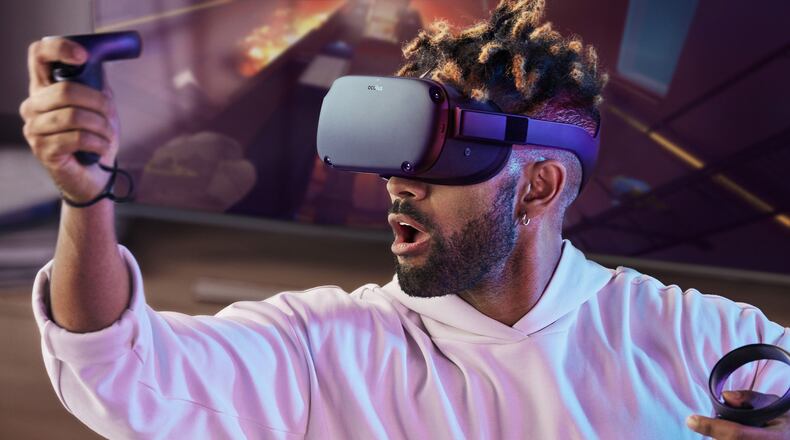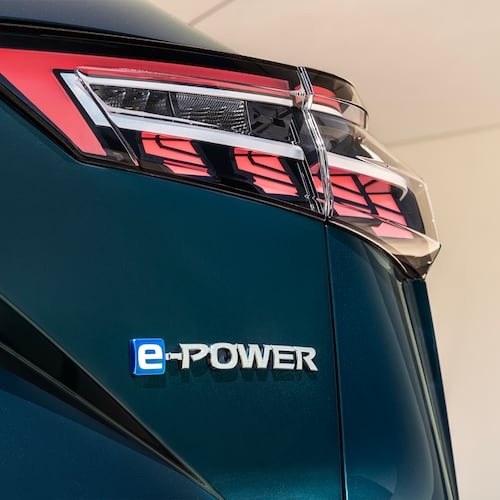Virtual reality has always faced barriers that prevented it from going mainstream. Oculus is quite aware of that. The price of a VR machine paired with a powerful PC was a financial obstacle.
The company solved that issue by creating the Oculus Go, a $269 headset. It’s a machine that costs less than console, but the friendly price point comes at the cost of tech specs.
The Oculus Rift remains the flagship system with the best visuals and the most advanced technology, but the elements holding that back has been the setup and wires. To get in the game, players have to ready the right environment by positioning cameras and creating safe zones in a room. It’s a time-consuming process like setting up a complicated board game.
The third time could be the charm for the Facebook subsidiary. The Oculus Quest marries the Go and Rift taking the best of both systems to find an exciting middle ground. Coming in the spring and priced at $399, the Quest is an all-in-one VR system that doesn’t need wires.
Like the Go, the Quest has a simple setup and ease of use. Players just put it on and it works. The device uses technology called Oculus Insight that allows the system to track player movements and monitor the area around them. Using wide-angle sensors and a new type of algorithm, the technology lets players enter VR anywhere without fear of bumping into a wall or knocking their leg against the couch. The Quest reads the environment around players and warns them when an obstacle is in the way.
Paired with the Oculus Touch controllers, players can interact with a VR world with unprecedented freedom. Unbound by wires, it removes one of the major annoyances with the technology — mainly being tethered to a high-end PC. They don’t have to worry about tangling themselves in cords or tripping over them.
The improved accessibility could be a game changer for the technology. It makes a full VR experience portable, essentially bringing it to anyone. It makes playing VR as convenient as the Nintendo Switch. Want to game while on vacation, you can take it with you in a backpack. At a party? Players can bring it over with the snacks and give the curious a taste of virtual reality.
Sharing has always been impediment for VR. It’s a technology that doesn’t translate on the magazine page or screenshot. VR is something that’s meant to be experienced. For those questioning if the technology can be the next big thing, using it firsthand sometimes changes their mind.
In my hands-on time with the Quest, it offered true freedom in virtual reality. I played “Tennis Scramble,” which offers a “Wii Sports”-type of experience. I grabbed the racket with the Touch controller and it stayed on without having to hold the grip button. I could move wherever I wanted in a square area measuring about 9 feet by 9 feet. If I hit the invisible walls, it was no big deal. You could go beyond the safe space but if I went near an obstacle, the device would warn me.
I competed against a human opponent who had another Quest headset on. She served it and the sensation to just run after the ball was immediate. I jab stepped to the left and hit it back in a quick motion and hit the return. I scored a point. To serve, I had to stand in specific green square and wait for the ball to pop up as if it were on a tee. I hit it and did it in a way that it curved and sliced. She returned it and I was too slow to hit it and she scored a point.
I talked with the demo representative and he said that the experience was so immersive that the second person who tested it out ran after the ball in VR. He ended up outside the designated play area. He told me not to do that. I complied, but the temptation to just wander off the court was there with that freedom of movement.
The one worry I had was that I’d be so into “Tennis Scramble” that the Quest headset fly off. Thankfully, it fit firmly on my face and no matter how sudden my movement, the device stayed locked on. It really felt like I was playing the real thing, and that’s the best compliment for the game.
When it was over and I had won, 5-1, but I wanted just one more match to play one of the best VR experiences I’ve come across. I felt like this one of the promises of VR fulfilled, and I wanted to see what other experiences were in store.
About the Author
Keep Reading
The Latest
Featured


